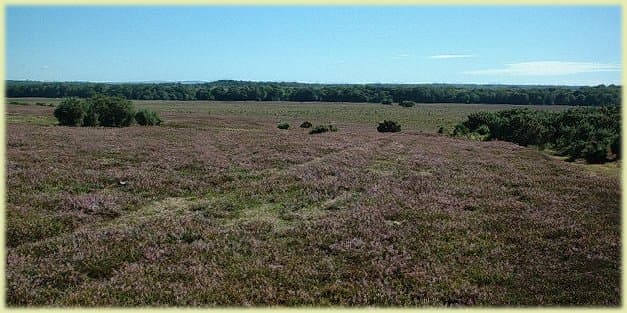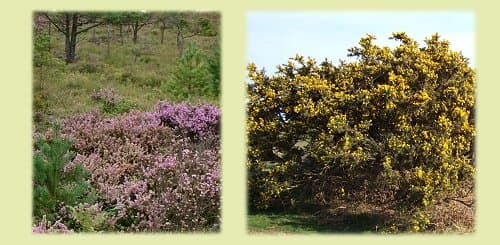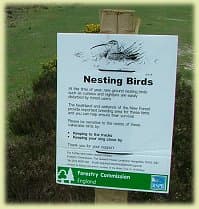New Forest heathlands
New Forest
heathlands
Overview
The New Forest heathlands are the most characteristic habitat of the Forest and are some of the most important lowland sites for nature study in Europe. Indeed, there aren’t many places left in Britain and Europe that can boast such expanses of untouched heath.
These heathlands have changed little over time but were once covered in dense forest, as was much of the British Isles.
It was the area’s inhabitants of the Bronze Age that cleared these forests, opening up large areas for basic agricultural use. However, the sandy, acidic soils were largely infertile and unsuitable for any serious use – the primary factor in ensuring the survival of the New Forest heathlands through the centuries.
In present times, animal grazing helps maintain the heathlands, while in winter controlled burning by the Forestry Commission promotes new springtime growth of grass and prevents the scrub from completely taking over.
The biggest areas of heathland occupy the western half of the New Forest and count for around half of the area of the Open Forest.
The heathlands are fairly uniform in appearance – almost completely covered in heather (bell heather and ling) with a good scattering of gorse bushes and bracken. The heather flowers in summer, bringing the normally dull-brown heathlands to life with shades of purple and pink. At this time, the bracken is also at its greenest, while the yellow flowers of the gorse have all but disappeared, having bloomed a couple of months earlier.
The heathlands of the New Forest are criss-crossed by sandy tracks, and low-lying areas play host to another of the Forest habitats, the bogs.
New Forest heathland wildlife
The low, dense covering of the heather and scrub provides a good home for many different species of insects and invertebrates. In turn, this attracts a healthy diversity of animal and birdlife and the heathlands are home to several of Britain’s rarest species.
Notably, the sand lizard and smooth snake (shown below) are both protected species that survive in select areas of the New Forest heaths, while the rare Dartford Warbler is now a permanent resident in amongst the gorse.
Nesting Birds
Ground nesting birds, such as nightjar and skylarks, are also to be found on some of the New Forest heathlands. In fact, about one quarter of New Forest birds nest in this habitat.
Between March 1st and July 31st great care must be taken while walking on any of the heaths – always walk on the paths! Indeed, the Countryside and Rights of Way Act (2000) is in force on certain parts of the Forest, and dog walkers especially must take note; dogs must be kept on a short lead during this period.
Numerous warning notices are put up at this time of year, all around the heathlands where nests may be.
For visitors to the New Forest National Park, the question “But where’s the forest?” may well be justified when viewing such large open tracts of land, but the New Forest heathlands are as characteristic of the area as the mighty oak and beech trees are, and must be accepted as a major part of the Forest!
Related Pages:

New Forest Activities for Single-Parent Families
The New Forest offers a wealth of year-round experiences perfect for single-parent families looking to create lasting memories. From spring woodland walks surrounded by bluebells to summer picnics by gentle streams, the national park provides

Practical Equipment for Life on the Road
More people choose mobile living every year, from weekend caravanners to full-time digital nomads. Homes on wheels promise freedom, changing scenery, and a lifestyle that breaks away from traditional routines. That lifestyle only feels comfortable

How to Enjoy the New Forest’s Nature and Wildlife Without Breaking the Bank
The New Forest is one of the UK’s most cherished landscapes, a place where ancient woodlands, open heathlands, free-roaming ponies, and peaceful villages come together to create an unforgettable outdoor escape. And while many people

Why Time in Nature Complements Daily Astrological Guidance
Many of us start the morning with a quick look at our horoscope. A few lines can help name our mood, highlight a tension, or point out an opening in the day. What often gets
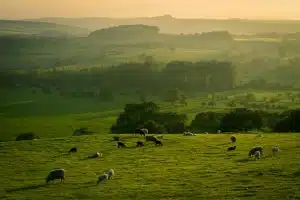
UK’s best natural spots
Wilderness escapes are not for everyone, that’s for sure. Some people simply prefer holidays where they can lounge all day and take it easy instead of being active, going hiking, swimming, or cycling. But there
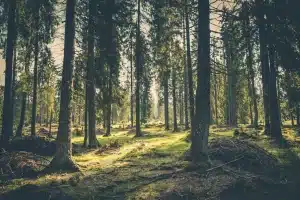
Tech Hacks for Exploring the New Forest National Park
The New Forest National Park in the UK is one of Britain’s most enchanting natural destinations. Covering ancient woodlands, open heathlands, and winding walking trails, it offers visitors a chance to step back in time

